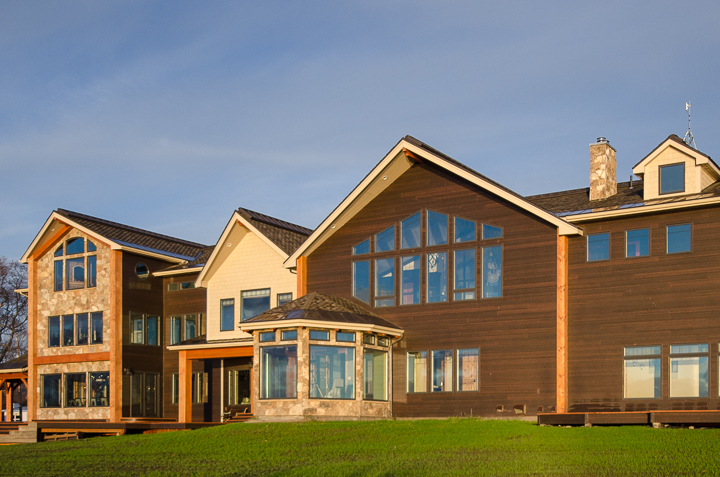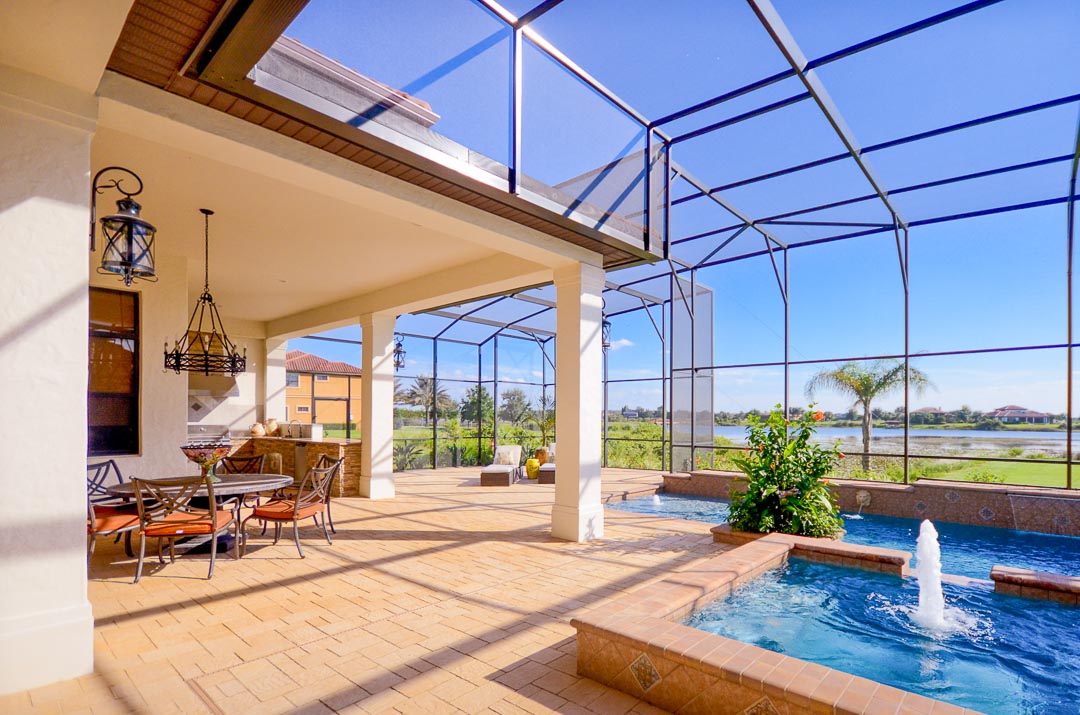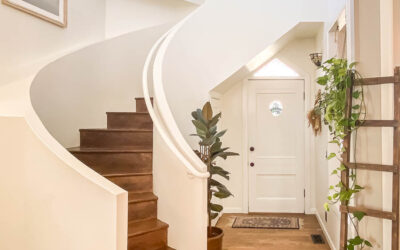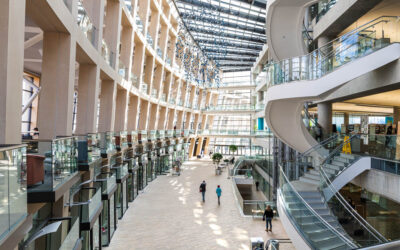Best time of day to photograph a building

I’m asked this nearly every time I book an architectural photoshoot. Because buildings are almost entirely subject to natural light, the answer is both important and complicated.
For large or unique buildings, I schedule a pre-shoot walkthrough to plan my schedule and then typically it requires two photoshoots to complete.
Here are a few things I take into consideration:
The reality of architectural photography is that light is everything and your primary source of light is the sun.
BEST TIME OF DAY FOR PHOTOGRAPHING BUILDING EXTERIORS
Which direction does the focal point of the building face? If there’s more than one focal point side, the time of day will differ.
East facing – Early morning, ideally during golden hour when the light is warm and rich.
West facing – Late afternoon to evening golden hour.
South facing – Early morning or evening. Midday can sometimes work as well especially if you are also capturing a pool and want few shadows.
North facing – North facing can be a little tricky, especially during winter. Early morning or evening is often a solid choice, especially if the building is angled a little one way or the other.
Shooting at twilight (aka blue hour) is a solution for properties where the landscaping hasn’t been installed yet or isn’t looking it’s best. They’re also good for north facing buildings.
Twilight shots have become so popular in real estate photography that entire businesses have built up around creating them with Photoshop from daytime images. Unfortunately, they all have a similar look, and sometimes the exact same sky. I personally feel consumers now see them as ordinary and cliché. This is a shame because genuine twilight images (photographed at twilight) are strikingly beautiful, and I do suggest them for certain situations.
These are just a few starting points, because of the many variables when photographing building exteriors. Take courtyards for example. In this case, midday will light this space which would be shadowed any other time of day.
There is no one “perfect” time of day to shoot interior photos, there are many.

Best Time of Day to Photograph a Building Interior
Interiors have even more variables because you must consider not only how the room is receiving light, but also how the light is entering through the windows. A light bathed room is lovely, but if you also want to capture the view out of the windows, the sun will be blasting into your lens. It’s not unusual to schedule an entire day to photograph a large or high-end property because there is no one “perfect” time of day, there are many.
A safe, but uninspiring, time to photograph interiors is midday when it’s guaranteed that the sun won’t blast through the windows creating large white squares in your images. So, if you need a sure bet, then choose midday. Unfortunately, the shadows will likely be quite harsh on the exterior.
For more interesting images, plan a time when the room will fill with warm golden-hour light. It can be especially pretty when the window light stretches across the floor creating pattern and interest.
If you are trying to capture a view, avoid shooting directly into the sun, but also consider when the view is at its prime. Often a simple angle shift (placing the sun just out of frame) will allow you to capture it.
I feel the need to address the question, “Can’t you just use HDR?” HDR (high dynamic range) is an editing technique that merges images of different exposures into a final image with the correct exposure throughout the scene. Sadly, HDR images often have a fake look, especially when it was used to correct a scene that had dramatic differences between light and dark. The subtle and skilled use of HDR can make a lovely image more striking, but it can’t fix a bad one. I’ve seen HDR abused, especially in the real estate photography market where time constraints force shooting at sub-optimal times of day.
Best Weather for Photographing a Building
So what weather is ideal? In general, some blue sky and sun is best. If it’s wet and rainy, I delay if possible because the light is flat and drab. Yes, Photoshop can fix many things, but flat light is well… flat. It’s hard to fix.
The only time I appreciate a cloud passing in front of the sun is when I must manage awkward shadows on a building (and can’t shoot at a better time). Then it can be a gift, especially if I still have a mostly pretty sky. It’s less than ideal.
How can I tell where the sun will be at a given time and day in the future? I use a very simple app called SunCalc.net – Its entire purpose is the map sun position with no other extras and it’s a lifesaver for me as an architectural photographer.
I wish this post could have been four bullet points instead of over 600 words, but the reality of architectural photography is that light is everything and your primary source of light is the sun.
If you are ready to have your building professionally photographed or if you have questions about the process of hiring a commercial photographer, please reach out. I’m happy to help!
Mastering Architectural Photography with Your Smartphone
In architectural photography, it's not merely about taking pictures. It's about seeing—the light, the line, and the life of buildings. An expert with any camera, including the one in your pocket, learns this through practice and patience. The photo below was shot with...
Real Estate Photography vs. Architectural Photography
As an architectural photographer I’ve been asked difference between my work and real estate photography a few times, so I decided to highlight the similarities and differences between them. Real estate photography and architectural photography might seem synonymous;...
Shadow and Light – The Downtown Public Library
The first time I walked into the Downtown Public Library, I knew I needed to return with my camera. Its shape and curves create a blend of shadows and light that inspired me. I also appreciated the human element of the space. It’s a third place that welcomes all walks...




0 Comments